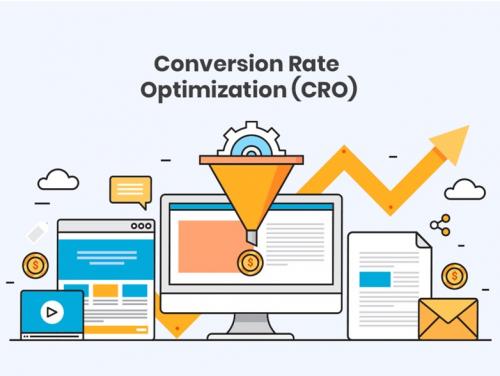The Beginner's Guide to Conversion Rate Optimization

Conversion Rate Optimization (CRO) is the process of improving the efficiency of a website or landing page with the goal of increasing conversions. Conversions can be anything from a newsletter sign-up to a product purchase.
CRO is a complex and ever-changing field, but there are some basic principles that can help you get started. In this beginner's guide, we will cover the following topics:
- What is conversion rate optimization?
- Why is CRO important?
- How to calculate your conversion rate
- The 7 steps of CRO
- Common CRO mistakes to avoid
- Tools and resources for CRO
What is Conversion Rate Optimization?
Conversion rate optimization (CRO) is the process of improving the efficiency of a website or landing page with the goal of increasing conversions. Conversions can be anything from a newsletter sign-up to a product purchase.
There are many different factors that can affect conversion rate, including the website's design, the content, the calls to action, and the user experience. CRO is the process of identifying and optimizing these factors to improve conversion rate.
Why is CRO Important?
CRO is important because it can help you increase your sales, leads, and revenue. Even a small increase in conversion rate can have a big impact on your bottom line.
For example, if you have a website with 10,000 visitors per month and a conversion rate of 1%, you will generate 100 conversions per month. If you can increase your conversion rate to 2%, you will generate 200 conversions per month, which is a 100% increase in sales.
How to Calculate Your Conversion Rate
To calculate your conversion rate, you need to divide the number of conversions by the number of visitors and multiply that number by 100.
For example, if you have 100 conversions and 10,000 visitors, your conversion rate is 1%.
The 7 Steps of CRO
The 7 steps of CRO are:
- Define your goals. What do you want to achieve with CRO? Do you want to increase sales, leads, or signups?
- Understand your audience. Who are your target visitors? What are their needs and wants?
- Analyze your website. What are the strengths and weaknesses of your website? Where are people dropping off?
- Test different changes. Make small changes to your website and test different versions to see what works best.
- Track your results. Use analytics tools to track your conversion rate and see what changes are having a positive impact.
- Iterate and improve. Keep testing and iterating until you reach your desired conversion rate.
- Measure your success. Once you have achieved your desired conversion rate, measure your success and track your progress over time.
Common CRO Mistakes to Avoid
There are a few common CRO mistakes that you should avoid:
- Not having a clear goal. Before you start optimizing your website, you need to have a clear goal in mind. What do you want to achieve with CRO?
- Not understanding your audience. It's important to understand your target audience before you start making changes to your website. What are their needs and wants? What motivates them to take action?
- Making too many changes at once. When you're testing different changes to your website, it's important to make small changes one at a time. This will help you isolate the changes that are having a positive impact on your conversion rate.
- Not tracking your results. It's important to track your results so that you can see what changes are having a positive impact on your conversion rate.
- Not iterating and improving. Once you've made some
changes to your website, you need to keep testing and iterating until
you reach your desired conversion rate.
Tools and Resources for CRO
There are a number of tools and resources that can help you with CRO. Some of the most popular tools include:
- Google Analytics
- Optimizely
- Crazyegg
- Hotjar
- A/B Tasty
There are also a number of resources available online that can help you learn more about CRO. Some of the most popular resources include:
- ConversionXL
- CXL
- ConversionVertigo
- Unbounce
- HubSpot
Conclusion
CRO is a complex and ever-changing field, but it can be a very effective way to improve your website's performance. By following the tips in this guide, you can start optimizing your website and increasing
Post Your Ad Here

Comments